Renault Symbioz vs Dacia Bigster - Forskelle og priser i sammenligning
Pris og effektivitet er ofte de områder, hvor forskellene er størst. Her afgøres det ofte, hvilken bil der bedst passer til budgettet på lang sigt.
Dacia Bigster har en noget prisfordel – den starter allerede ved 188000 dkr, mens Renault Symbioz koster 223300 dkr. Forskellen er omkring 35341 dkr.
Der ses også en forskel i brændstofforbrug: Renault Symbioz nøjes med 4.50 L og er dermed minimal mere økonomisk end Dacia Bigster, der bruger 4.70 L. Forskellen er omkring 0.20 L pr. 100 km.
Effekt, drejningsmoment og acceleration er de klassiske mål for bilentusiaster – og her træder forskellene tydeligt frem.
Når det gælder motorkraft, har Renault Symbioz en knap mærkbar fordel – 158 HK mod 155 HK. Det svarer til en forskel på cirka 3 HK hk.
I acceleration fra 0 til 100 km/t er Renault Symbioz let hurtigere – den klarer sprinten på 9.10 s, mens Dacia Bigster bruger 9.70 s. Det er cirka 0.60 s hurtigere.
I tophastighed ligger foran – den når , mens topper ved . Forskellen er cirka .
Der er også forskel på drejningsmomentet: Renault Symbioz trækker i mindre grad kraftigere med 265 Nm mod 230 Nm. Forskellen er omkring 35 Nm.
Udover rå ydeevne handler hverdagen mest om komfort og anvendelighed. Her afgøres det, hvilken bil der er mest praktisk og alsidig.
Sæder: tilbyder flere siddepladser – mod .
Hvad angår egenvægt, er Renault Symbioz let lettere – 1359 kg mod 1425 kg. Forskellen er cirka 66 kg.
Når det kommer til bagagerumsplads, tilbyder Dacia Bigster i mindre grad mere – 667 L mod 576 L. Forskellen er omkring 91 L.
I maksimal lastekapacitet klarer Dacia Bigster sig en smule bedre – op til 1937 L, cirka 255 L mere end Renault Symbioz.
I lasteevne vinder Dacia Bigster let – 467 kg mod 459 kg. Forskellen er omkring 8 kg.
Hvem løber med sejren?
Samlet set fremstår Dacia Bigster som viser små men tydelige fordele og sikrer sig dermed titlen som DriveDuel Champion.
Den imponerer med et mere afbalanceret helhedsindtryk og er den mest alsidige i hverdagen.
 @ Dacia / Renault Group Media
@ Dacia / Renault Group Media
Dacia Bigster
Omkostninger og forbrug
Se detaljeret analyse
Motor og ydeevne
Se detaljeret analyse
Dimensioner og karrosseri
Se detaljeret analyse
Renault Symbioz
Renault Symbioz er en fremtidsorienteret konceptbil, der kombinerer dristigt fransk design med indre ro og en forførende komfort, som gør daglig pendling en anelse mere luksuriøs. Den tegner en klar vision for sammenkoblet og stressfri kørsel, og vil tiltale købere der gerne vil skille sig ud uden at opgive praktisk sans — samt få naboen til at kigge en ekstra gang.
Detaljer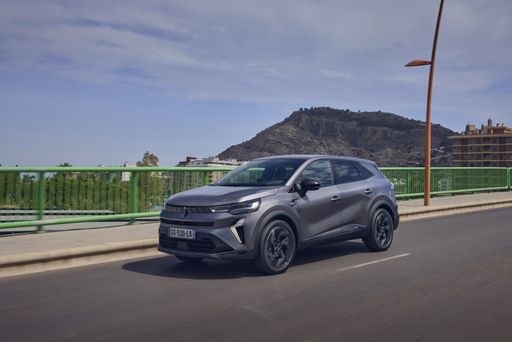 @ Renault Group Media
@ Renault Group Media
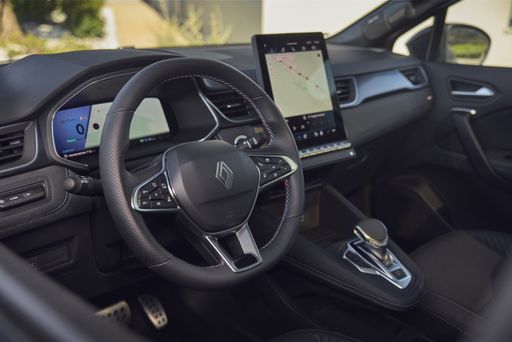 @ Renault Group Media
@ Renault Group Media
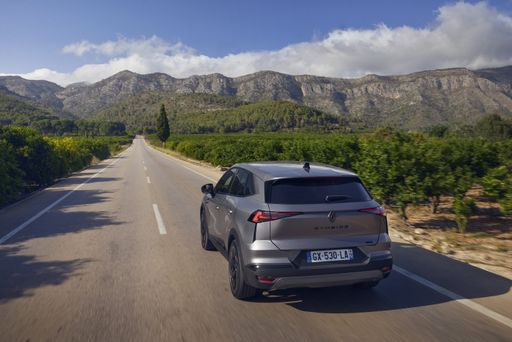 @ Renault Group Media
@ Renault Group Media
Dacia Bigster
Dacia Bigster er en overbevisende pragmatiker på hjul — robust byggestil og vanvittigt prisvenlig, hvis du foretrækker funktion frem for flash. Den er praktisk, let at eje og rar at køre, så hvis du vil have maksimal plads og få bekymringer, er Bigster et frisk pust i en verden af overpyntede SUV’er.
Detaljer @ Dacia / Renault Group Media
@ Dacia / Renault Group Media
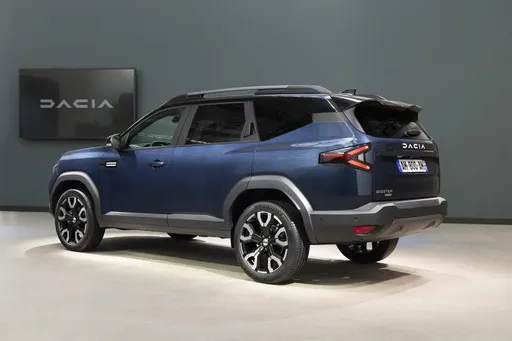 @ Dacia / Renault Group Media
@ Dacia / Renault Group Media
 @ Dacia / Renault Group Media
@ Dacia / Renault Group Media
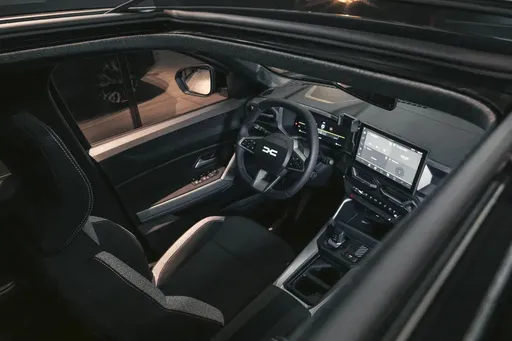 @ Dacia / Renault Group Media
@ Dacia / Renault Group Media
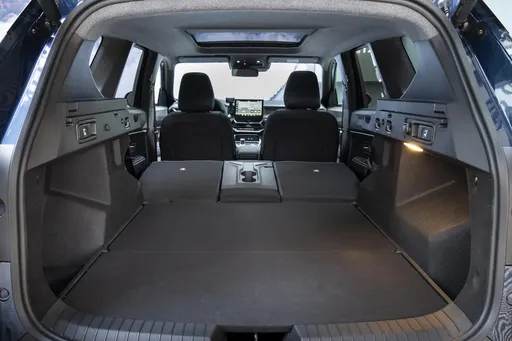 @ Dacia / Renault Group Media
@ Dacia / Renault Group Media
 @ Renault Group Media
@ Renault Group Media
|
 @ Dacia / Renault Group Media
@ Dacia / Renault Group Media
|
|
|
|
Omkostninger og forbrug |
|
|---|---|
|
Pris
223300 - 280500 dkr
|
Pris
188000 - 242800 dkr
|
|
Forbrug L/100km
4.5 - 6 L
|
Forbrug L/100km
4.7 - 7.1 L
|
|
Forbrug kWh/100km
-
|
Forbrug kWh/100km
-
|
|
Elektrisk rækkevidde
-
|
Elektrisk rækkevidde
-
|
|
Batterikapacitet
-
|
Batterikapacitet
-
|
|
co2
102 - 136 g/km
|
co2
106 - 137 g/km
|
|
Tankkapacitet
48 L
|
Tankkapacitet
50 - 55 L
|
Dimensioner og karrosseri |
|
|---|---|
|
Karrosseri
SUV
|
Karrosseri
SUV
|
|
Sæder
5
|
Sæder
5
|
|
Døre
5
|
Døre
5
|
|
Egenvægt
1359 - 1544 kg
|
Egenvægt
1425 - 1547 kg
|
|
Bagagerumskapacitet
492 - 576 L
|
Bagagerumskapacitet
510 - 667 L
|
|
Længde
4413 mm
|
Længde
4570 mm
|
|
Bredde
1797 mm
|
Bredde
1813 mm
|
|
Højde
1575 mm
|
Højde
1705 mm
|
|
Maksimal bagagerumskapacitet
1582 - 1682 L
|
Maksimal bagagerumskapacitet
1813 - 1937 L
|
|
Lastkapacitet
376 - 459 kg
|
Lastkapacitet
383 - 467 kg
|
Motor og ydeevne |
|
|---|---|
|
Motortype
Fuld hybrid, Benzin mild-hybrid
|
Motortype
Benzin mild-hybrid, Fuld hybrid, LPG
|
|
Transmission
Automatisk, Manuel
|
Transmission
Manuel, Automatisk
|
|
Transmissionsdetaljer
Automatgearkasse, Manuel gearkasse, Automatisk dobbeltkobling
|
Transmissionsdetaljer
Manuel gearkasse, Automatiseret manuel
|
|
Drivtype
Forhjulstræk
|
Drivtype
Firehjulstræk, Forhjulstræk
|
|
Effekt HK
140 - 158 HK
|
Effekt HK
130 - 155 HK
|
|
Acceleration 0-100 km/t
9.1 - 11 s
|
Acceleration 0-100 km/t
9.7 - 11.2 s
|
|
Maks. hastighed
180 km/h
|
Maks. hastighed
180 km/h
|
|
Moment
250 - 265 Nm
|
Moment
230 Nm
|
|
Antal cylindre
4
|
Antal cylindre
3 - 4
|
|
Effekt kW
103 - 116 kW
|
Effekt kW
96 - 115 kW
|
|
Motorstørrelse
1332 - 1789 cm3
|
Motorstørrelse
1199 - 1799 cm3
|
Generelt |
|
|---|---|
|
Modelår
2025
|
Modelår
2025
|
|
CO2-effektivitetsklasse
C, D, E
|
CO2-effektivitetsklasse
E, D, C
|
|
Mærke
Renault
|
Mærke
Dacia
|
Hvilke drivlinjer findes til Renault Symbioz?
Modellen tilbydes med Forhjulstræk.
De viste priser og data er estimater baseret på tyske listepriser og kan variere fra land til land. Disse oplysninger er ikke juridisk bindende.
